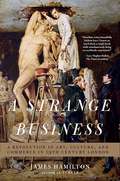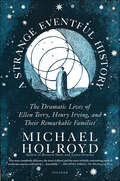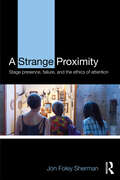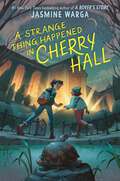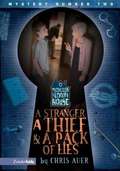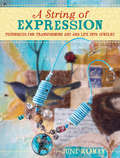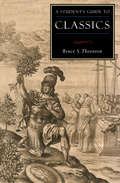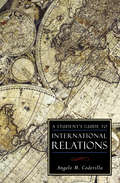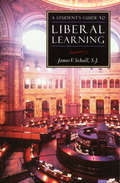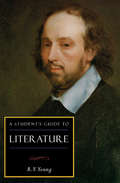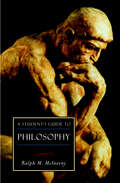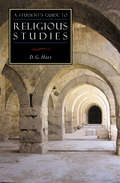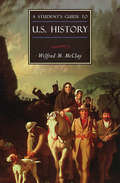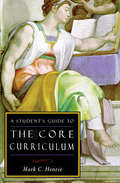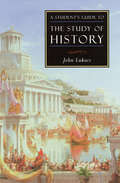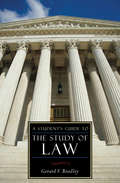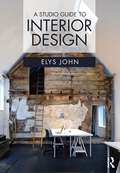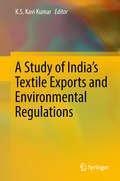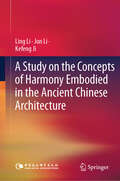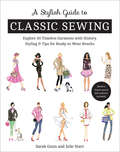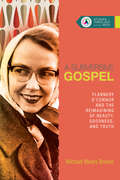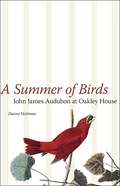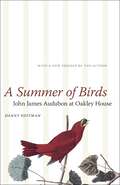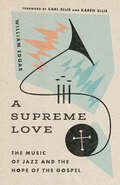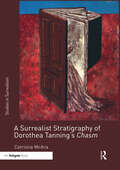- Table View
- List View
A Strange Business: Making Art And Money In Nineteenth-century Britain
by James HamiltonBritain in the nineteenth century saw a series of technological and social changes which continue to influence and direct us today. Its reactants were human genius, money and influence, its crucibles the streets and institutions, its catalyst time, its control the market. In this rich and fascinating book, James Hamilton investigates the vibrant exchange between culture and business in nineteenth-century Britain, which became a center for world commerce following the industrial revolution. He explores how art was made and paid for, the turns of fashion, and the new demands of a growing middle-class, prominent among whom were the artists themselves. While leading figures such as Turner, Constable, Landseer, Coleridge, Wordsworth, and Dickens are players here, so too are the patrons, financiers, collectors and industrialists; publishers, entrepreneurs, and journalists; artists' suppliers, engravers, dealers and curators; hostesses, shopkeepers and brothel keepers; quacks, charlatans, and auctioneers. Hamilton brings them all vividly to life in this kaleidoscopic portrait of the business of culture in nineteenth-century Britain, and provides thrilling and original insights into the working lives of some of the era's most celebrated artists.
A Strange Eventful History: The Dramatic Lives of Ellen Terry, Henry Irving, and Their Remarkable Families
by Michael HolroydPLEASE NOTE: THIS EBOOK DOES NOT CONTAIN PHOTOS INCLUDED IN THE PRINT EDITION.Deemed "a prodigy among biographers" by The New York Times Book Review, Michael Holroyd transformed biography into an art. Now he turns his keen observation, humane insight, and epic scope on an ensemble cast, a remarkable dynasty that presided over the golden age of theater.Ellen Terry was an ethereal beauty, the child bride of a Pre-Raphaelite painter who made her the face of the age. George Bernard Shaw was so besotted by her gifts that he could not bear to meet her, lest the spell she cast from the stage be broken. Henry Irving was an ambitious, harsh-voiced merchant's clerk, but once he painted his face and spoke the lines of Shakespeare, his stammer fell away to reveal a magnetic presence. He would become one of the greatest actor-managers in the history of the theater. Together, Terry and Irving created a powerhouse of the arts in London's Lyceum Theatre, with Bram Stoker—who would go on to write Dracula—as manager. Celebrities whose scandalous private lives commanded global attention, they took America by stormin wildly popular national tours.Their all-consuming professional lives left little room for their brilliant but troubled children. Henry's boys followed their father into the theater but could not escape the shadow of his fame. Ellen's feminist daughter, Edy, founded an avant-garde theater and a largely lesbian community at her mother's country home. But it was Edy's son, the revolutionary theatrical designer Edward Gordon Craig, who possessed the most remarkable gifts and the most perplexing inability to realize them. A now forgotten modernist visionary, he collaborated with the Russian director Stanislavski on a production of Hamlet that forever changed the way theater was staged. Maddeningly self-absorbed, he inherited his mother's potent charm and fathered thirteen children by eight women, including a daughter with the dancer Isadora Duncan.An epic story spanning a century of cultural change, A Strange Eventful History finds space for the intimate moments of daily existence as well as the bewitching fantasies played out by its subjects. Bursting with charismatic life, it is an incisive portrait of two families who defied the strictures of their time. It will be swiftly recognized as a classic.Please note: This ebook edition does not contain photos and illustrations that appeared in the print edition.
A Strange Proximity: Stage Presence, Failure, and the Ethics of Attention
by Jon Foley ShermanWhat happens in the relationship between audience and performer? What choices are made in the space of performance about how we attend to others? A Strange Proximity examines stage presence as key to thinking about performance and ethics. It is the first phenomenological account of ethics generated from, rather than applied to, contemporary theatrical productions. The ethical possibilities of the stage, argues Jon Foley Sherman, rest not so much in its objects—the performers and the show itself—as in the “how” of attending to others. A Strange Proximity is a unique perspective on the implications of attention in performance.
A Strange Thing Happened in Cherry Hall
by Jasmine WargaFrom the author of A Rover's Story and Other Words for Home comes an extraordinary story about two friends, a ghost, a missing painting, and a turtle named Agatha. The perfect next read for fans of The Swifts, Kate DiCamillo, and Erin Entrada Kelly. <P><P> A painting has been stolen…! <P><P> When Rami sees a floating girl in the museum, he knows he has seen her somewhere before. Then he realizes: She looks just like the girl in the painting that has gone missing. But how does her appearance connect to the theft? <P><P> Agatha the turtle knows—she has been watching from the garden. But she can’t exactly tell anyone…can she? <P><P> Will Rami, with the help of his classmate, Veda, be able to solve the mystery? The clues are all around them, but they’ll have to be brave enough to really look. <P><P> This is a whimsical, moving story about the universal desire to be seen and understood and how art can help us find connection, even when we are at our loneliest. <p> <b>New York Times Bestseller</b>
A Stranger, a Thief and a Pack of Lies (Mystery of Eckert House #2)
by Chris AuerMany secrets lie within the walls of Eckert House, but no one is prepared when a stranger claiming to be the sole heir of Eckert House shows up. Dan and his friends aren't convinced. Things get complicated when accusation hits close to home. Can they uncover the truth before it's too late?
A String of Expression: Techniques For Transforming Art And Life Into Jewelry
by June RomanCreate beautifully textured jewelry that reflects your true self! The self-expressive elements we put into the works of art we make can be transferred to the jewelry we create. Colors, textures, symbolism and more make up the works created in our art journals. Author June Roman shares how she draws inspiration from her own journal pages and guides you through the process for making your own wearable works of art that are an expression of your passions, dreams and secrets. A String of Expression takes you on a journey through five chapters - each exploring a unique facet of our world such as the colors we love, the places we've traveled, the people who have inspired us and the fantasies we tuck deep in our hearts. In addition to discovering how to transcribe all of these things into the components that make up your own jewelry pieces, you'll learn creative new techniques such as: working collage into a pendant knotting beads with leather creating your own toggles from unusual beads developing successful asymmetrical design wire-wrapping making your own bead caps and more! Take your design skills on an unexpected journey and let A String of Expression inspire you to transcribe your life into jewelry today!
A Student's Guide to Classics (ISI Guides to the Major Disciplines)
by Bruce S. ThorntonBruce Thornton's crisp and informative Student's Guide to Classics provides readers with an overview of each of the major poets, dramatists, philosophers, and historians of ancient Greece and Rome. Including short bios of major figures and a list of suggested readings, Thornton's guide is unparalleled as a brief introduction to the literature of the classical world.
A Student's Guide to International Relations (ISI Guides to the Major Disciplines #4)
by Angelo M. CodevillaA concise journey through geopolitics and the continuing debate about America&’s role in the world. Terrorist attacks, wars in Afghanistan and Iraq, the rise of China, and the decline of Europe have underscored the necessity of understanding the world around us. But how should we approach this crucial but often misunderstood topic? What do we need to know about the international order and America&’s role in it?A Student&’s Guide to International Relations provides a vital introduction to the geography, culture, and politics that make up the global environment. Angelo Codevilla, who has taught international relations at some of America&’s most prestigious universities, explains the history of the international system, the dominant schools of American statecraft, the instruments of power, contemporary geopolitics, and more. The content of international relations, he demonstrates, flows from the differences between our global village&’s peculiar neighborhoods. This witty and wise book helps make sense of a complex world.
A Student's Guide to Liberal Learning: Liberal Learning Guide (ISI Guides to the Major Disciplines)
by James V. SchallA Georgetown professor&’s look at the subjects one needs to study for a truly well-rounded education. A Student&’s Guide to Liberal Learning is an inviting conversation with a learned scholar about the content of an authentic liberal arts education. It surveys ideas and books central to the tradition of humanistic education that has fundamentally shaped our country and our civilization. This accessible volume argues for an order and integration of knowledge so that meaning might be restored to the haphazard approach to study currently dominating higher education. Freshly conveying the excitement of learning from the acknowledged masters of intellectual life, this guide is also an excellent blueprint for building one&’s own library of books that matter.
A Student's Guide to Literature: Literature Guide (ISI Guides to the Major Disciplines)
by R.V. YoungExplore the works of Western literature that have stood the test of time—and discover titles to enrich your own book collection.A Student&’s Guide to Literature takes up these questions: In a time of mass culture and pulp fiction, can great literature still be discerned, much less defended? Why is literature so compelling? What should we read? Literary scholar R. V. Young addresses these timely issues in this guide to Western literature and poetry. He demonstrates that literature liberates the mind from cultural and temporal provincialism by expanding our intellectual and emotional horizons. Learn how great fiction and poetry are integral to a liberal education, and visit the classic works of literature again—or for the first time.
A Student's Guide to Philosophy: Philosophy (ISI Guides to the Major Disciplines)
by Ralph M. McInernyA powerful essay on the pursuit of wisdom, with recommendations for further reading.A Student&’s Guide to Philosophy examines these questions: Who is a philosopher? Can philosophical thought be avoided? What have philosophers written over the ages? And why should we care? In this critical essay, these and other questions are posed and answered by one of America&’s leading philosophers, Ralph McInerny of the University of Notre Dame. Schools of thought are examined with humor and verve, and the principal works of philosophers and scholars are recommended.
A Student's Guide to Religious Studies (ISI Guides to the Major Disciplines)
by D. G. HartAn exploration of the challenges of teaching and studying about religion in secular academic settings. The study of religion in American higher education is fraught with difficulties that raise important questions about the nature of faith and the purpose of advanced learning. Although religion has been foundational to some of the United States&’ most prestigious universities, religious studies is a relatively recent addition to the liberal arts curriculum. As a result, students often take courses in religion with expectations that exceed what professors can actually deliver. D. G. Hart explores the conundrums of the ambiguous position of religious studies in the academy and offers advice about the best way to approach and benefit from the teaching and study of religion in contexts often hostile to faith.
A Student's Guide to U.S. History (ISI Guides to the Major Disciplines)
by Wilfred M. McClayA lively, concise guide to the events and ideas that have shaped America over the centuries. No nation in modern history has had a more powerful sense of its own distinctiveness than the United States. Yet few Americans understand the immensely varied sources of that sense and the fascinating debates that have always swirled around our attempts to define &“America&” with greater precision. All too many have come to regard the study of their national history as tedious, just as they fail to embrace the past as something in which they must be consciously grounded. In this introduction to the study of American history, Wilfred M. McClay invites us to experience the perennial freshness and vitality of this great subject as he explores some of the enduring commitments and persistent tensions that have made America what it is.
A Student's Guide to the Core Curriculum (ISI Guides to the Major Disciplines)
by Mark C Henrie&“This slender volume explains the merits of getting an old-fashioned liberal arts education&” (The American Spectator). College students today have tremendous freedom to choose the courses they will take. With such freedom, however, students face a pressing dilemma: How can they choose well? Which courses convey the core of an authentic liberal arts education, transmitting our civilizational inheritance, and which courses are merely passing fads? From the smorgasbord of electives available, how can students achieve a coherent understanding of their world and their place in history? In a series of penetrating essays, A Student&’s Guide to the Core Curriculum explains the value of a traditional core of studies in Western civilization and then surveys eight courses available in most American universities which may be taken as electives to acquire such an education. This guide puts &“the best&” within reach of every student.
A Student's Guide to the Study of History (ISI Guides to the Major Disciplines #15)
by John LukacsA thoughtful look at the value of learning from the past: &“Nobody has done more than John Lukacs to turn the short history book into an art form&” (Antony Beevor, Toronto Globe & Mail). To study history is to learn about oneself. And to fail to grasp the importance of the past—to remain ignorant of the deeds and writing of previous generations—is to bind oneself by the passions and prejudices of the age into which one is born. John Lukacs, one of today&’s most widely published historians, explains what the study of history entails, how it has been approached over the centuries, and why it should be undertaken by today&’s students. This guide is an invitation to become a master of the historian&’s craft.
A Student's Guide to the Study of Law (ISI Guides to the Major Disciplines)
by Gerard V. BradleyA law professor&’s concise look at legal concepts, landmark cases, and the complex relationship between law and morality. In a society in which courts, and hence lawyers, have achieved extraordinary power, it is not surprising that the discipline of law is contentious and controversial. In A Student&’s Guide to the Study of Law, Gerard V. Bradley, professor of law at the University of Notre Dame Law School and an expert in the areas of constitutional law and law and religion, introduces readers to the major concepts, cases, and thinkers that have shaped American legal scholarship and history. He also helps readers better understand what, at bottom, is at stake in the different understandings of the nature of law that drive many of our national debates.
A Studio Guide to Interior Design
by Elys JohnA Studio Guide to Interior Design leads you through the creative process of developing an interior design proposal. From reading existing buildings, to presenting the final design, each stage is illustrated with analytical diagrams demonstrating clearly the workflow, processes and skills needed at each stage of the design process. Throughout the book there are key references to drawing, digital practice, author illustrated diagrams and design precedents. The book shows how to effectively read existing architecture and interiors and sets out orthographic drawing principles, to be used as an integral part of conceptual design development. It also looks at the integration of technology within the design process. The book has a complementary focus towards hand drawing and digital practice and uses a case study driven, diagrammatic approach so students can readily apply programmatic concepts to their own project context. Ideally suited to students at the beginning of their course, the book covers everything students need to get to grips with early on in their studies and features a wealth of pedagogical features.
A Study of India's Textile Exports and Environmental Regulations
by K.S. Kavi KumarThis book examines the interplay between trade and the environment, with a focus on the Indian textile sector. While it is often claimed that developed countries' non-tariff trade measures adversely affect the trade prospects of developing countries, establishing that claim systematically is a challenging task. This book examines the dilemma on the basis of various approaches, including a primary survey of different stakeholders and the large-scale modelling of the economy-environment inter-linkages. The interplay between the costs involved in meeting environmental regulations and the potential price-premiums that the cleaner products would get in the international market is analysed in order to assess the future trade prospects for Indian textiles. In addition, the book provides a comprehensive overview of the present scenario of the Indian textile sector. Accordingly, it will be of great interest to researchers, policy makers and graduate students specializing in environmental economics, development economics and international economics.
A Study on the Concepts of Harmony Embodied in the Ancient Chinese Architecture
by Jun Li Ling Li Kefeng JiThis book explores the core concept of Chinese ancient architecture from a multidisciplinary perspective. It aims to contribute to the development, inheritance, and protection of Chinese ancient architectural culture, while also benefiting the sustainable development of modern architecture. This book follows a main line of inquiry, exploring the rich and harmonious ideas present in Chinese ancient architecture. It combines the traditional Chinese culture and architectural ideas, and examines the original thought that forms the foundation of the traditional Chinese architectural culture of “harmony” from various aspects. Firstly, the book describes the Taoist theory of the harmony between man and nature, as expressed through different architectural elements. Secondly, it discuses the system of harmony among people influenced by Confucianism. Lastly, it explores the significance of Buddhism in Buddhist architecture. Finally, it also examines the difference in the emodiment of harmonious ideas between Chinese and Western architectures. This book studies and analyzes the type and characteristics of Chinese ancient architecture, the architectural objects, and the simple ecological environment views contained within the architectural concept. It not only analyzes the historical development context, but also provides physical examples of architectural types, and explores the influence of regional environmental factors. The target audience for this book includes scholars in universities and scientific research departments, particularly those studying architectural aesthetics, history and philosophy, it is also suitable for the ordinary readers who have interest in Chinese traditional architectural culture.
A Stylish Guide to Classic Sewing: Explore 30 Timeless Garments with History, Styling & Tips for Ready-to-Wear Results
by Julie Starr Sarah GunnThe authors of The Tunic Bible craft a “clever guide to the DIY creation of tried and true staples of a woman’s wardrobe . . . truly inspiring” (Publishers Weekly).Discover the secrets to sewing a stylish wardrobe with staying power! This spirited guide walks you through thirty timeless garments to make for yourself, including a must-have button-up shirt, tailored trousers, a flattering A-line dress, and the indispensable modern classic pencil skirt. With a conversational narrative, the authors have created an engaging, informative guide to sewing by tracing the origins of each garment, along with styling and sewing tips, charming fashion illustrations, and a modeled photo gallery.Pencil skirt pattern and instructions included!“This delightfully illustrated book featuring a conversational narrative chronicles 30 beloved classic silhouettes that lie at the core of women’s wardrobes . . . Each garment chapter laced with fascinating facts and trivia tidbits gives new meaning to why we wear what we wear . . . [a] keen guide to creating a fresh collection of timeless garments.” —Elysian“It should be inspirational to those just beginning to sew for themselves as well as those who just aspire to it! . . . With this book in hand, you will both sew and dress with confidence and style.” —Fifty Dresses“This book is so well-written and the illustrations are amazing.” —Girls in the Garden
A Subversive Gospel: Flannery O'Connor and the Reimagining of Beauty, Goodness, and Truth (Studies in Theology and the Arts)
by Michael BrunerThe good news of Jesus Christ is a subversive gospel, and following Jesus is a subversive act. These notions were embodied in the literary work of American author Flannery O'Connor, whose writing was deeply informed by both her Southern context and her Christian faith. In this volume in IVP Academic's Studies in Theology and the Arts series, theologian Michael Bruner explores O'Connor's theological aesthetic and argues that she reveals what discipleship to Christ entails by subverting the traditional understandings of beauty, truth, and goodness through her fiction. In addition, Bruner challenges recent scholarship by exploring the little-known influence of Baron Friedrich von Hügel, a twentieth-century Roman Catholic theologian, on her work. Bruner's study thus serves as a guide for those who enjoy reading O'Connor and—even more so—those who, like O'Connor herself, follow the subversive path of the crucified and risen one.
A Summer of Birds: John James Audubon at Oakley House (The Hill Collection: Holdings of the LSU Libraries)
by Danny HeitmanAs the summer of 1821 began, John James Audubon's ambition to create a comprehensive pictorial record of American birds was still largely a dream. Then, out of economic necessity, Audubon came to Oakley Plantation, a sprawling estate in Louisiana's West Feliciana Parish. Teeming with an abundance of birds, the woods of Oakley galvanized Audubon's sense of possibility for one of the most audacious undertakings in the annals of art. In A Summer of Birds, journalist and essayist Danny Heitman sorts through the facts and romance of Audubon's summer at Oakley, a season that clearly shaped the destiny of the world's most famous bird artist. Heitman draws from a rich variety of sources -- including Audubon's own extensive journals, more recent Audubon scholarship, and Robert Penn Warren's poetry -- to create a stimulating excursion across time, linking the historical man Audubon to the present-day civic and cultural icon. He considers the financial straits that led to Audubon's employment at Oakley as a private tutor to fifteen-year-old Eliza Pirrie, Audubon's family history, his flamboyance as a master of self-invention, his naturalist and artistic techniques, and the possible reasons for his dismissal. Illustrations include photographs of Oakley House -- now a state historic site -- Audubon's paintings from his Oakley period, and portraits of the Pirrie family members. A favorable combination of climate and geography made Oakley a birding haven, and Audubon completed or began at least twenty-three bird paintings -- among his finest work -- while staying there. A Summer of Birds will inform and delight readers in its exploration of this eventful but unsung 1821 interlude, a fascinating chapter in the life of America's foremost bird artist. It is an indispensable pleasure for birders, Audubon enthusiasts, and visitors to Oakley House.
A Summer of Birds: John James Audubon at Oakley House (The\hill Collection: Holdings Of The Lsu Libraries Ser.)
by Danny HeitmanOver the summer of 1821, a cash-strapped John James Audubon worked as a tutor at Oakley Plantation in Louisiana’s rural West Feliciana Parish. This move initiated a profound change in direction for the struggling artist. Oakley’s woods teemed with life, galvanizing Audubon to undertake one of the most extraordinary endeavors in the annals of art: a comprehensive pictorial record of America’s birds. That summer, Audubon began what would eventually become his four-volume opus, Birds of America.In A Summer of Birds, Danny Heitman recounts the season that shaped Audubon’s destiny, sorting facts from romance to give an intimate view of the world’s most famous bird artist. A new preface marks the two-hundredth anniversary of that eventful interlude, reflecting on Audubon’s enduring legacy among artists, aesthetes, and nature lovers in Louisiana and around the world.
A Supreme Love: The Music of Jazz and the Hope of the Gospel
by William EdgarFor practitioners and fans, jazz expresses the deepest meanings of life.In this volume, theologian and jazz pianist William Edgar argues that the music of jazz cannot be properly understood apart from the Christian gospel, which like jazz moves from deep lament to inextinguishable joy. By tracing the development of jazz, placing it within the context of the African American experience, and exploring the work of jazz musicians like Miles Davis, Duke Ellington, John Coltrane, Ella Fitzgerald, and Louis Armstrong, Edgar argues that jazz deeply resonates with the hope that is ultimately found in the good news of Jesus Christ.Grab a table. The show is about to begin.
A Surrealist Stratigraphy of Dorothea Tanning’s Chasm (Studies in Surrealism)
by Catriona McAraIn A Surrealist Stratigraphy of Dorothea Tanning’s Chasm, Catriona McAra offers the first critical study of the literary work of the celebrated American painter and sculptor Dorothea Tanning (1910–2012). McAra fills a major gap in the scholarship, repositioning Tanning’s writing at the centre of her entire creative oeuvre and focusing on a little-known short story "Abyss," a gothic-flavoured, desert adventure which Tanning worked on intermittently throughout her creative life, finally publishing it in 2004 as Chasm: A Weekend.McAra performs a major reassessment of the visual and literary principles upon which the surrealist movement was initially founded. Combining a groundbreaking methodological approach with reference to cultural theory and feminist aesthetics as well as Tanning’s unpublished journals and notes, McAra reveals Tanning as a key player in contemporary art practice as well as in the historical surrealist milieu.
